TRUE CRIME FROM WHARNCLIFFE
Foul Deeds and Suspicious Deaths Series
Barking, Dagenham & Chadwell Heath
Barnsley
Bath
Bedford
Birmingham
More Foul Deeds Birmingham
Black Country
Blackburn and Hyndburn
Bolton
Bradford
Brighton
Bristol
Cambridge
Carlisle
Chesterfield
Cumbria
More Foul Deeds Chesterfield
Colchester
Coventry
Croydon
Derby
Durham
Ealing
Fens
Folkstone and Dover
Grimsby
Guernsey
Guildford
Halifax
Hampstead, Holborn and St Pancras
Huddersfield
Hull
Jersey
Leeds
Leicester
Lewisham and Deptford
Liverpool
Londons East End
Londons West End
Manchester
Mansfield
More Foul Deeds Wakefield
Newcastle
Newport
Norfolk
Northampton
Nottingham
Oxfordshire
Pontefract and Castleford
Portsmouth
Rotherham
Scunthorpe
Seffield
Southend-on-Sae
Southport
Staffordshire and the Potteries
Stratford and South Warwickshire
Tees
Warwickshire
Wigan
York
OTHER TRUE CRIME BOOKS FROM WHARNCLIFFE
A-Z of London Murders
A-Z of Yorkshire Murders
Black Barnsley
Brighton Crime and Vice 1800-2000
Durham Executions
Essex Murders
Executions & Hangings in Newcastle and Morpeth
Norfolk Mayhem and Murder
Norwich Murders
Strangeways Hanged
Unsolved Murders in Victorian & Edwardian London
Unsolved Norfolk Murders
Unsolved Yorkshire Murders
Warwickshires Murderous Women
Yorkshire Hangmen
Yorkshires Murderous Women
Please contact us via any of the methods below for more information
or a catalogue
WHARNCLIFFE BOOKS
47 Church Street, Barnsley, South Yorkshire, S70 2AS
Tel: 01226 734555 734222 Fax: 01226 734438
email:
website: www.wharncliffebooks.co.uk

First Published in Great Britain in 2009 by
Wharncliffe Books
an imprint of
Pen and Sword Books Limited,
47 Church Street, Barnsley,
South Yorkshire. S70 2AS
Copyright Stephen Wade, 2009
ISBN: 978 1 84563 105 5
Digital Edition ISBN: 978 1 84468 814 2
The right of Stephen Wade to be identified
as author of this Work has been asserted by him in
accordance with the Copyright, Designs and Patents Act, 1988.
A CIP catalogue record of this book is available from the
British Library.
All rights reserved. No part of this book may be reproduced, stored in a retrieval system, or transmitted, in any form or by any means, electronic, mechanical,photocopying, recording or otherwise, without the prior permission in writing of the publishers.
Printed in the United Kingdom by
MPG Books
Pen & Sword Books Ltd incorporates the imprints of
Pen & Sword Aviation, Pen & Sword Maritime, Pen & Sword Military,
Wharncliffe Local History, Pen & Sword Select, Pen & Sword Military Classics,
Leo Cooper, Remember When, Seaforth Publishing and Frontline Publishing
For a complete list of Pen & Sword titles please contact:
PEN & SWORD BOOKS LIMITED
47 Church Street, Barnsley, South Yorkshire, S70 2AS, England.
E-mail:
Website: www.pen-and-sword.co.uk
Introduction
 he wonders of the Victorian age in science and technology took a long time to percolate into forensic science, but after pioneering work by Alphonse Bertillon and by several others across the world, fingerprints were taken into official recognition, and a murder case was solved soon afterwards. By 1900, fingerprinting established forensic work at Scotland Yard as truly based in science. In the 1940s, after two celebrated cases and pioneering work by Sir Bernard Spilsbury, forensic orthodontics was added to the armoury of the forces of criminal investigation. These were attempts to individualise material, investigate more minutely the physical evidence at crime scenes. But behind these significant advances something far more momentous was happening: DNA was being identified and defined in the study of genetics.
he wonders of the Victorian age in science and technology took a long time to percolate into forensic science, but after pioneering work by Alphonse Bertillon and by several others across the world, fingerprints were taken into official recognition, and a murder case was solved soon afterwards. By 1900, fingerprinting established forensic work at Scotland Yard as truly based in science. In the 1940s, after two celebrated cases and pioneering work by Sir Bernard Spilsbury, forensic orthodontics was added to the armoury of the forces of criminal investigation. These were attempts to individualise material, investigate more minutely the physical evidence at crime scenes. But behind these significant advances something far more momentous was happening: DNA was being identified and defined in the study of genetics.
There had been blood-grouping of course; work by Karl Landsteiner established the A, B and O blood groups in 1901; and in 1925 it was discovered that blood groups could be ascertained from other body fluids. By the 1960s the Scotland Yard forensic science lab could use bloodstains to relate evidence to suspects with a high level of accuracy. Back in the nineteenth century, blood on a suspect or at a crime scene could not be defined in terms of its origin it could have been human or animal, and so confusions and uncertainties arose. But DNA (deoxyribonucleic acid) was to revolutionise matters in this area of police and legal procedure.
DNA exists in the sixty trillion cells within the human body. Some DNA is contained in genes, and as genetics has advanced, so has the knowledge of the nature and location of DNA. This is virtually unique in each person, and so the forensic uses are obvious.
Friedrich Miescher first discovered DNA in 1868 but only in 1943 did two scientists, Oswald Avery and Colin McLeod, discover that it held specific genetic information. Then, in 1953, Francis Crick, James Watson and Maurice Wilkins discovered and explained the defining double-helix shaping of the DNA in the cell. It became clear that all humans have a certain amount of the same DNA in common - but not all. From that realisation came a recognition of the practical applications of the knowledge.
Arguably the most celebrated milestone in the history of DNA used in forensics is that of the Colin Pitchfork case (). This followed the discovery by Sir Alec Jeffreys of a method of identifying individuals from DNA. He called the method Restriction Fragment Length Polymorphism which means that sequences of DNA in a shorter length of cellular form could be analysed. Or, in plain English, he called it DNA Fingerprinting. It took until 1987 for the first conviction to be made.
This book aims to tell the story of how the knowledge of DNA led to the revolution in forensics; many of the cases here have been resolved. During the writing of the book, two infamous and controversial cases of savage murder were solved and the real culprits imprisoned for life: Robert Napper for the murder of Rachel Nickell (and others) and Peter Tobin in Scotland also for multiple murders. But other headlines in 2008/09 were equally significant for inclusion.
DNA gives specific information about a person, and can identify a criminal with certainty. As well as meaning that guilty people may be sentenced and imprisoned, it also means that there are very probably innocent people in prison, and that has proved to be the case..
But the repercussions of this new knowledge do not end there. In October 2007, the famous case of Dr Crippen, a man hanged for the murder of his wife in 1910, was suddenly questioned. David Foran and John Trestrail, forensic scientists in America, have stated with confidence that the body in the cellar of Crippens home at Hilltop Crescent in London was not that of his wife, Cora. Trestrail has said, There were no identifying parts of the remains found, no head, no bones, no organs of gender. Ive always wondered, who is that under the steps? But there are some remains of tissue, and so the mitochondrial DNA there has been analysed. This is the DNA from the maternal ovum, passed down from mother to daughter. This kind of DNA is present for longer in remains and is undiluted. A match with the mother is easily made. Foran and Tretrail worked forward in time, tracing relatives of Cora Crippen, and it has been established that there is no mitochondrial link, so the body was not that of Mrs Crippen. Who was she? That is the next question for crime historians and scientists.




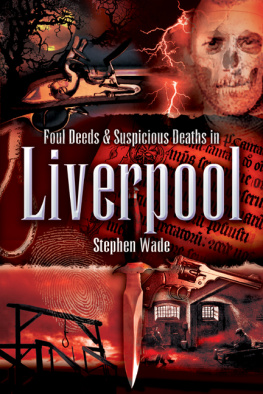




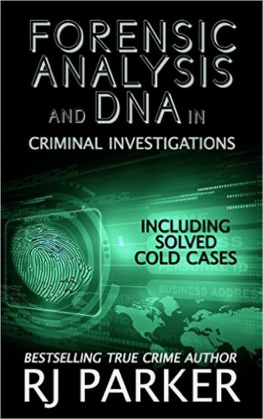

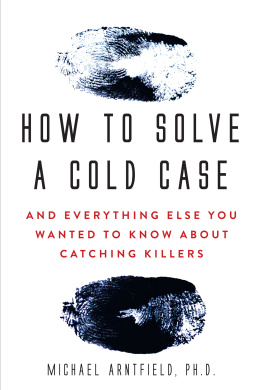

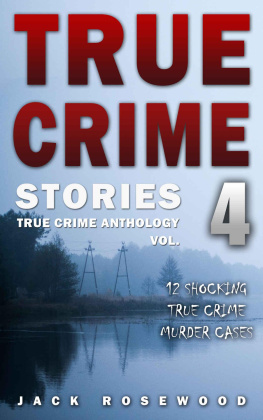
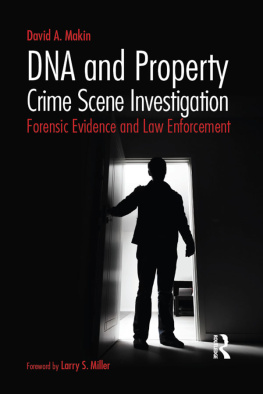
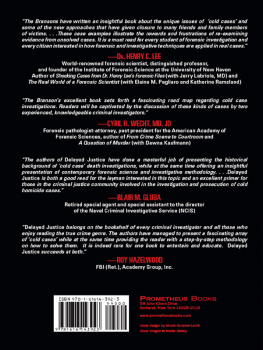
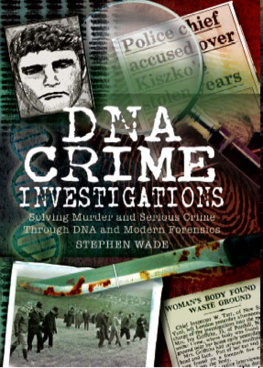

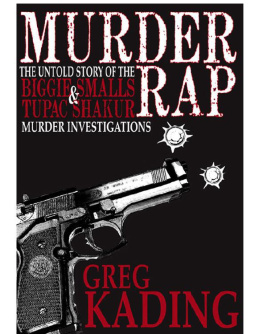


 he wonders of the Victorian age in science and technology took a long time to percolate into forensic science, but after pioneering work by Alphonse Bertillon and by several others across the world, fingerprints were taken into official recognition, and a murder case was solved soon afterwards. By 1900, fingerprinting established forensic work at Scotland Yard as truly based in science. In the 1940s, after two celebrated cases and pioneering work by Sir Bernard Spilsbury, forensic orthodontics was added to the armoury of the forces of criminal investigation. These were attempts to individualise material, investigate more minutely the physical evidence at crime scenes. But behind these significant advances something far more momentous was happening: DNA was being identified and defined in the study of genetics.
he wonders of the Victorian age in science and technology took a long time to percolate into forensic science, but after pioneering work by Alphonse Bertillon and by several others across the world, fingerprints were taken into official recognition, and a murder case was solved soon afterwards. By 1900, fingerprinting established forensic work at Scotland Yard as truly based in science. In the 1940s, after two celebrated cases and pioneering work by Sir Bernard Spilsbury, forensic orthodontics was added to the armoury of the forces of criminal investigation. These were attempts to individualise material, investigate more minutely the physical evidence at crime scenes. But behind these significant advances something far more momentous was happening: DNA was being identified and defined in the study of genetics.